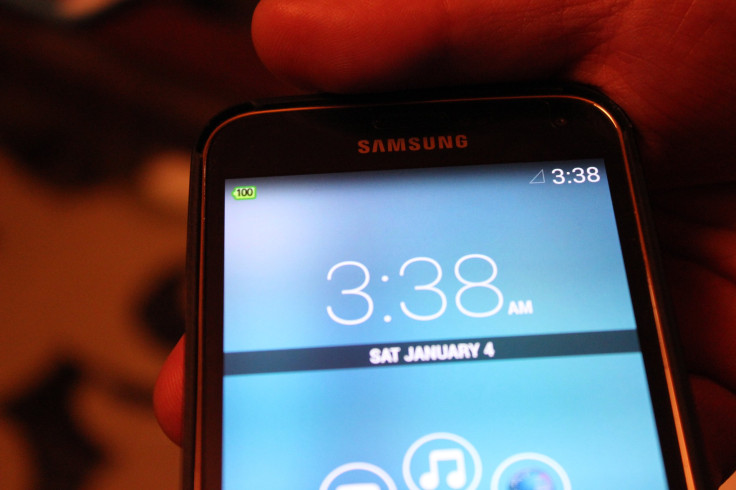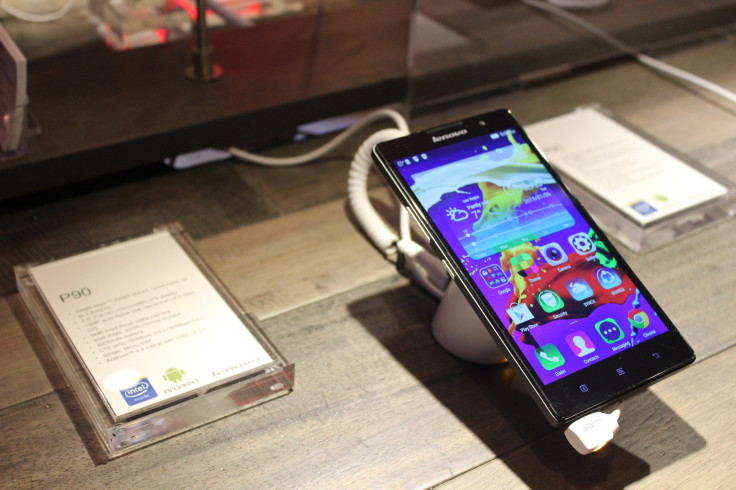CES: Smartphone Makers Know Your Battery Sucks, Here’s How They Plan To Fix It

LAS VEGAS -- Amid all the advances in smartphones, battery technology has lagged painfully behind -- leaving users scrambling for AC outlets in awkward places like hotel lobbies, airport lounges and even public restrooms. But device makers, chip suppliers and third-party innovators hope to soon bridge the gap between the battery life consumers want and what devices can currently provide.
“I think there’s a real latent need out there for some innovation in battery. As consumers desire it more and more, that’s an opportunity somebody’s going to have to figure out,” said Michelle Leyden-Li, Qualcomm’s senior director of marketing.
Researchers are zeroing in on three main aspects of smartphone battery technology: increasing power capacity, optimizing hardware and software, and faster charging. Different areas of the mobile industry have different ideas on which aspects deserve the most focus, but all agree that the goal is to give consumers more juice over longer periods.
Bigger Batteries
Mobile batteries are getting bigger. Two years ago, capacity on many high-end smartphones was about 2500mAh (milliampere hour – a measure of the energy charge a battery can hold). The Samsung Galaxy S4, which launched in 2013, has a 2,600mAh battery. Now, some smartphones are approaching or exceeding 4,000mAh capacity. China’s Lenovo announced its P90 smartphone, which features a 4,000mAh battery, at the 2015 International CES here Monday.
Lenovo said extending capacity without compromising smartphone design is its biggest focus at the moment. “Trends are definitely moving toward the bigger battery. Companies -- including us -- are finding ways to fit a bigger battery into a slimmer profile,” said Craig Bond, Lenovo’s head of worldwide product communications.

Lenovo has already experimented with batteries and design on its Yoga brand of tablets. The tablets feature a cylindrical battery at the base, which affords higher capacity without compromising overall thickness. It also doubles as a built-in stand for the Yoga tablets. Of course, tablets traditionally have larger batteries than smartphones, so capacity is only one part of the story.
Quick Charging
In 2014, some manufacturers implemented quick-charge features on their smartphones. Motorola, a subsidiary of Lenovo, launched its Nexus 6 smartphone with its branded Turbo charge feature, which can add up to six hours to a low battery in 15 minutes. Motorola’s Droid Turbo (featuring a 3,900mAh battery) can add up to eight hours of charge in 15 minutes. Lenovo’s P90 smartphone also has a quick-charge feature, which provides a 50 percent increase in charge in 30 minutes.

Quick charging is designed to work only if a battery is low. A special adapter detects a low battery and sends an influx of power to restore the juice. “It’s kind of like a hose. I have a close to empty bucket and I can let the floodgates open. It’s like a dam; I can let the floodgates open and that’s OK,” said Ken Fong, a Motorola rep. “If your bucket is already 80 percent full, in order to not damage anything we have to trickle it down. That’s the whole concept.”
Quick charge begins at the core of a smartphone, in its processor, and that’s where companies like Qualcomm come in. Qualcomm supplies its Snapdragon chips to most Android phonemakers. Quick charge comes standard on many Snapdragon chips; however, it is up to manufacturers to enable it.
Flash Charging
Israeli startup StoreDot knows there's a huge gap between consumer demand for battery power and what batteries can actually provide, and has found a unique way around the problem. Its flash system can take a smartphone battery from empty to full in one to two minutes.

At a CES demo, StoreDot charged a Samsung Galaxy S5 outfitted with its after-market system from 8 percent to 100 percent in about two minutes. “With a flash battery, it depletes, but it immediately refills, so it’s like you have an endless battery,” said Doron Mysersdorf, StoreDot CEO. “I think a few years from now, everybody and everything charges fast.”
StoreDot’s system consists of a special battery and charger. The battery, developed by StoreDot, is attached to the back of a smartphone. The device is then inserted into its docking station to charge. A prior version could charge a smartphone in just 30 seconds, but the design proved too bulky. Still, StoreDot is convinced that consumers will favor faster charging over a slim design and says manufacturers have the freedom to redesign its battery case. StoreDot is in talks with major smartphone manufacturers to bring its technology to market by 2017.

The Software Side
Each new generation of smartphone includes some sort of battery optimization software to conserve power. Google implemented its Project Volta on its latest Android 5.0 Lollipop. Motorola smartphones such as the Droid Turbo and Moto X include software-based optimization features such as Active Display.

With Active Display, a user can long-press a powered-down screen to access basic information like the time without turning on the entire display, which saves battery life. “From the battery optimization aspect, you want to make everything work more efficiently on a device,” Fong said.
What’s Next?
Optimization can only go so far as smartphones get used for an increasing array of tasks, from showing movies to controlling in-home appliances. “There’s a race for applications to use more from the battery,” said Simon Litsyn, StoreDot CTO. In the short term, most manufacturers will rely on increasing battery capacity to give consumers more juice while they await more innovative solutions.
© Copyright IBTimes 2024. All rights reserved.












